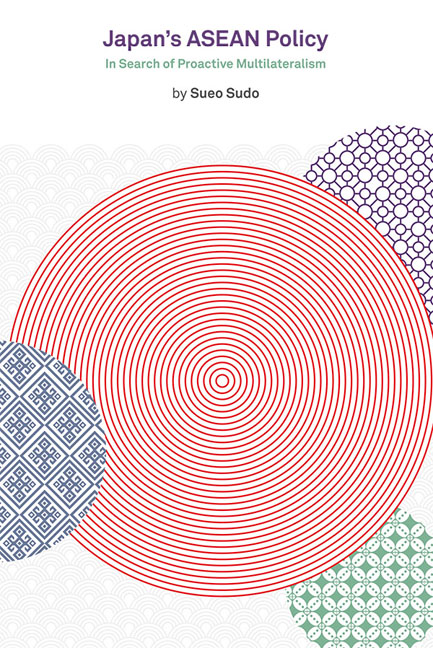Book contents
- Frontmatter
- Contents
- List of Figures and Tables
- Preface
- List of Abbreviations
- Introduction
- 1 ASEAN in Japanese Multilateral Foreign Policy
- 2 Embarking on Japan's ASEAN Policy: The Limitation of the Mainstream
- 3 Straightening the ASEAN-Indochina Divide: The Pursuit of the Alternative Stream
- 4 Consolidating an ASEAN-centred Policy: The Challenge of the Intermediate Stream
- 5 Fortifying a Japan-ASEAN Strategic Partnership: The Resurgence of the Mainstream
- 6 Towards a New Regionalism in East Asia
- 7 Conclusion
- Bibliography
- Index
- About the Author
5 - Fortifying a Japan-ASEAN Strategic Partnership: The Resurgence of the Mainstream
Published online by Cambridge University Press: 06 June 2017
- Frontmatter
- Contents
- List of Figures and Tables
- Preface
- List of Abbreviations
- Introduction
- 1 ASEAN in Japanese Multilateral Foreign Policy
- 2 Embarking on Japan's ASEAN Policy: The Limitation of the Mainstream
- 3 Straightening the ASEAN-Indochina Divide: The Pursuit of the Alternative Stream
- 4 Consolidating an ASEAN-centred Policy: The Challenge of the Intermediate Stream
- 5 Fortifying a Japan-ASEAN Strategic Partnership: The Resurgence of the Mainstream
- 6 Towards a New Regionalism in East Asia
- 7 Conclusion
- Bibliography
- Index
- About the Author
Summary
The end of the Cold War renewed interest in regional approaches to development and security. Apart from the obvious case of Europe with its economically integrated European Union, East Asia appears to be one of the most dynamic regions among developing countries. The Association of Southeast Asian Nations (ASEAN) has played a particular leading role in initiating closer regional interaction, as exemplified by the establishment of the ASEAN Regional Forum (ARF), Asia-Europe Meeting (ASEM) and the ASEAN Plus Three (APT). It is thus quite remarkable that these multilateral efforts are being carried out by ASEAN, whose very survival had initially seemed questionable. Even after the unprecedented financial crisis that occurred in Thailand in July 1997 and soon engulfed Northeast and Southeast Asian countries, ASEAN's regional role has been strengthened by the institutionalization of the EAS in 2005.
Beginning in 1997, Japan has also shown some notable initiatives in its foreign policy. It is notable because for the first time Japan has identified itself as part of East Asia. In particular, it was unprecedented that the Japanese government proposed the formation of an East Asian version of the International Monetary Fund in order to deal with the contagious financial crisis, despite American objections. To follow up, Japan offered the so-called Miyazawa plan and initiated the Japan-ASEAN Summit meeting, which led to the formation of a regularized APT forum. The high point was the adoption of the ASEAN community and the commemorative Tokyo summit in 2003.
When a populist premier instituted his domestic and foreign policy, Japan's East Asian policy was turned around, thus adversely affecting Japan-ASEAN relations. In particular, worsening Japan-China relations caused mainly by Prime Minister Junichiro Koizumi's controversial visit to the Yasukuni Shrine, could serve as a testing ground for closer Japan- ASEAN relations in the twenty-first century. While closely following the footsteps of the Takeshita Doctrine, this chapter focuses on how Japan managed to cope with the transitional period of the late 1990s and early 2000s.
ASEAN AT THIRTY
The year 1997 was critically important for ASEAN as it celebrated its thirtieth anniversary and convened a historical meeting with China, Japan and South Korea, later known as the APT.
- Type
- Chapter
- Information
- Japan's ASEAN PolicyIn Search of Proactive Multilateralism, pp. 148 - 198Publisher: ISEAS–Yusof Ishak InstitutePrint publication year: 2014

